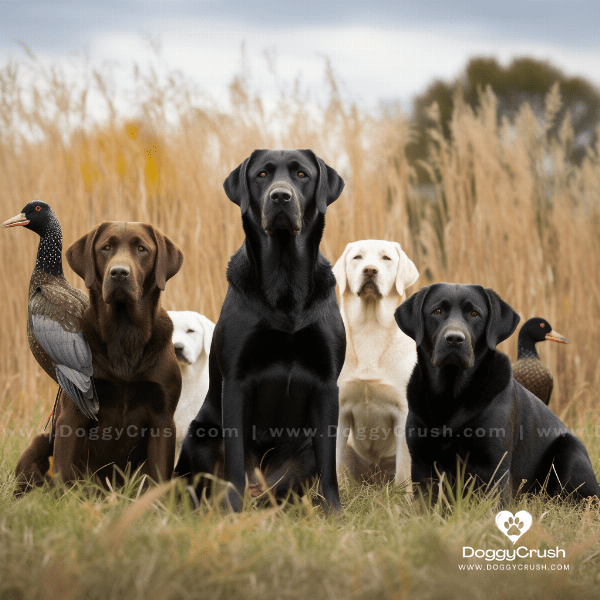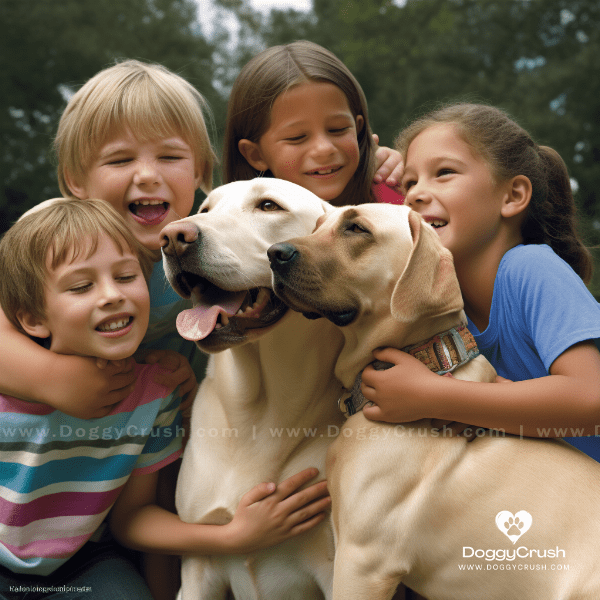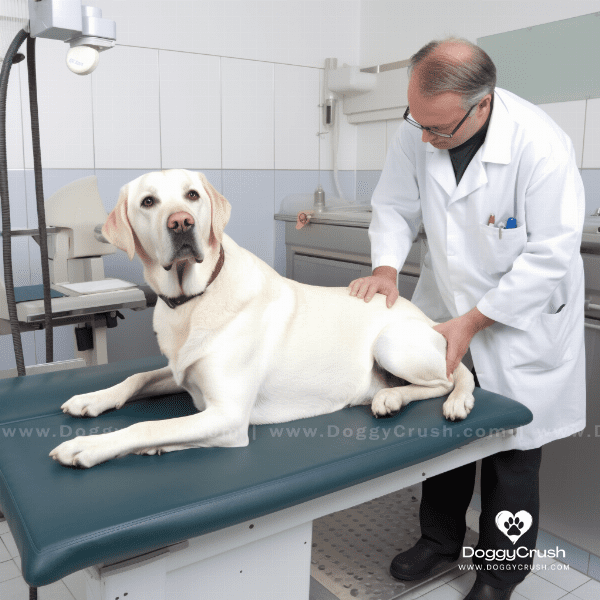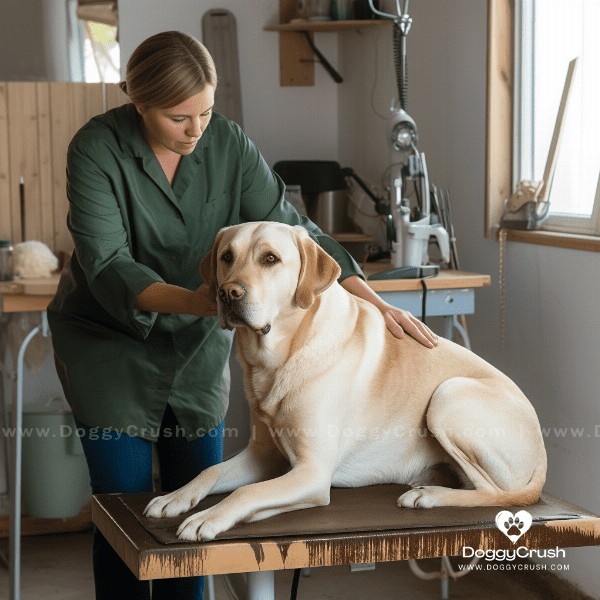Table of Contents
- History of Labrador Retriever Dogs
- Physical Characteristics of Labrador Retrievers
- Temperament and Personality of Labrador Retrievers
- Common Health Issues in Labrador Retrievers
- Training and Exercise Needs for Labrador Retrievers
- Nutrition and Feeding Guidelines for Labrador Retrievers
- Grooming and Maintenance of Labrador Retrievers
- Choosing the Right Labrador Retriever for You
- Understanding Labrador Retriever Behavior
History of Labrador Retriever Dogs
The Labrador Retriever is a beloved dog breed that has captured the hearts of dog lovers around the world. This breed originated in Newfoundland, Canada, where it was used as a hunting dog to retrieve waterfowl and fish. In the early 1800s, the Labrador Retriever was brought to England by English nobles and was then recognized as a distinct breed in 1903 by the English Kennel Club.
Origins of the Labrador Retriever
The Labrador Retriever’s ancestors were likely bred by the indigenous people of Newfoundland and Labrador for their hunting abilities. The dogs were trained to retrieve fish that had fallen off hooks, as well as to retrieve game birds that had been shot down. The breed was then refined by English breeders who crossed them with other hunting dogs like the St. John’s Water Dog and the Newfoundland.
Early Uses of the Labrador Retriever
The Labrador Retriever’s primary use was as a hunting dog, as it had the ability to retrieve game on land and in water. The breed’s strength and intelligence also made it useful for other tasks such as tracking, search and rescue, and as a guide dog for the blind.
Popularity of the Labrador Retriever
The Labrador Retriever’s popularity grew rapidly in the 20th century due to its loyal and friendly nature, making it a great family dog. Today, it is one of the most popular breeds in the world and is used in various fields such as law enforcement, therapy work, and as assistance dogs for those with disabilities.
Conclusion
The history of the Labrador Retriever is one that is rich with hunting traditions and the breeding efforts of many generations. From its origins in Newfoundland to its recognition as a breed in England, the Labrador Retriever has come a long way to become the beloved family companion that it is today. Understanding the history of this breed can help us appreciate and understand their unique characteristics and traits.

Physical Characteristics of Labrador Retrievers
Labrador Retrievers are a medium to large-sized breed with a strong, muscular build. They have a distinctive broad head and short, dense coat that can come in a range of colors including black, yellow, and chocolate.
Body Type
Labrador Retrievers have a sturdy build and are typically square in proportion with a broad chest and a deep, powerful body. They have a strong and muscular neck that flows into a broad, slightly arched back. The legs are straight and powerful with round, compact feet that are webbed, which aids in their swimming abilities.
Coat and Color
The Labrador Retriever’s coat is short, dense, and water-resistant, which makes it well-suited for the breed’s original purpose as a hunting dog. The coat can come in three main colors: black, yellow, and chocolate, with variations in shades for each color. The breed’s coat is relatively easy to maintain with regular brushing and bathing.
Head and Face
The Labrador Retriever’s head is broad with a strong, powerful jaw and a medium-length muzzle. They have friendly, expressive eyes that can range in color from brown to hazel. The breed’s ears are medium-sized and hang close to the head, with a slightly rounded tip.
Height and Weight
Male Labrador Retrievers typically stand between 22.5 and 24.5 inches at the shoulder, while females stand between 21.5 and 23.5 inches. The breed typically weighs between 55 and 80 pounds, with males being slightly larger than females.
Conclusion
The physical characteristics of the Labrador Retriever are a testament to the breed’s history as a working dog. Their strong, muscular build, water-resistant coat, and webbed feet all serve to make them exceptional retrievers in the field. Understanding their body type, coat, head and face, and height and weight can help owners appreciate their breed’s unique physical traits and better care for their dog’s specific needs.

Temperament and Personality of Labrador Retrievers
Labrador Retrievers are known for their friendly and outgoing personalities. They are loyal, intelligent, and easy to train, making them great family pets and working dogs.
Friendliness
Labrador Retrievers are known for their sociable and friendly nature. They enjoy spending time with their family and are especially good with children. They also get along well with other dogs and pets, making them great additions to multi-pet households.
Intelligence
Labrador Retrievers are highly intelligent dogs that are quick learners. They have an excellent memory and are able to learn and perform a wide range of tasks. They thrive on mental stimulation and need plenty of exercise and training to keep their minds engaged.
Trainability
Labrador Retrievers are one of the most trainable Dog breeds, thanks to their intelligence and eagerness to please their owners. They excel in obedience training, agility, and other canine sports. Proper training is essential for this breed as they can become destructive if left to their own devices.
Energy Level
Labrador Retrievers are a high-energy breed that require plenty of exercise to keep them physically and mentally healthy. They enjoy activities like swimming, hiking, and playing fetch. A lack of exercise can lead to destructive behavior, so it is important for owners to provide plenty of opportunities for their Lab to burn off energy.
Conclusion
The temperament and personality of the Labrador Retriever is what makes them such a beloved breed. Their friendly and outgoing nature, intelligence, and trainability make them great family pets and working dogs. However, their high energy level and need for exercise and mental stimulation mean they are not suitable for all owners. Understanding their unique traits and characteristics can help potential owners decide if the Labrador Retriever is the right breed for them.

Common Health Issues in Labrador Retrievers
While Labrador Retrievers are generally healthy dogs, there are some common health issues that can affect the breed. Understanding these issues can help owners better care for their dogs and prevent or manage any health problems.
Hip and Elbow Dysplasia
Hip and elbow dysplasia are common conditions in larger dog breeds, including Labrador Retrievers. These conditions occur when the joints do not develop correctly, leading to pain and stiffness. Proper nutrition, exercise, and regular vet checkups can help prevent or manage these conditions.
Obesity
Labrador Retrievers have a tendency to overeat and become overweight, which can lead to a range of health problems. Obesity can put strain on the joints, increase the risk of diabetes and heart disease, and shorten the dog’s lifespan. Owners should monitor their Lab’s diet and exercise to ensure they maintain a healthy weight.
Eye Problems
Labrador Retrievers can be prone to several eye problems, including cataracts, progressive retinal atrophy (PRA), and retinal dysplasia. These conditions can lead to vision loss or blindness, but regular eye exams can help detect and manage them.
Conclusion
While Labrador Retrievers are generally healthy dogs, there are some common health issues that can affect the breed. Owners should be aware of these conditions and take preventative measures to keep their dogs healthy. Regular vet checkups, proper nutrition, exercise, and prompt treatment of any health problems can help ensure a long and healthy life for your Labrador Retriever.

Training and Exercise Needs for Labrador Retrievers
Labrador Retrievers are highly intelligent dogs that require plenty of exercise and mental stimulation. Proper training and exercise are essential to keep them physically and mentally healthy, prevent destructive behavior, and ensure they are well-behaved family pets.
Exercise Requirements
Labrador Retrievers are a high-energy breed that require plenty of exercise to keep them physically fit and mentally stimulated. Daily walks, runs, or playtime in a fenced yard are essential for this breed. Swimming is also an excellent form of exercise for Labradors, as they have a natural affinity for water.
Mental Stimulation
Labrador Retrievers are highly intelligent dogs that require mental stimulation to prevent boredom and destructive behavior. Training sessions, puzzle toys, and games like fetch and hide-and-seek can provide the mental stimulation they need. Obedience training and agility classes are also great ways to challenge your Lab’s mind.
Positive Reinforcement Training
Labrador Retrievers respond well to positive reinforcement training methods, which involve rewarding desired behaviors with treats or praise. These methods are effective and help to build a strong bond between the owner and dog. Consistency and patience are key when training a Labrador Retriever.
Socialization
Socialization is essential for all dogs, and Labrador Retrievers are no exception. Early and ongoing socialization can help prevent fear and aggression towards other dogs and people. Introducing your Lab to a variety of people, animals, and situations can help them become well-adjusted and confident adults.
Conclusion
Training and exercise are essential to keeping a Labrador Retriever physically and mentally healthy. Regular exercise, mental stimulation, positive reinforcement training, and socialization are all important for this breed. With proper training and care, your Labrador Retriever can become a well-behaved and loyal companion.

Nutrition and Feeding Guidelines for Labrador Retrievers
Proper nutrition is essential for the health and well-being of Labrador Retrievers. A well-balanced diet that meets their nutritional needs can help prevent health problems and ensure they maintain a healthy weight.
Nutritional Needs
Labrador Retrievers require a balanced diet that provides them with all the necessary nutrients, including protein, carbohydrates, fats, vitamins, and minerals. Protein is particularly important for this breed, as it helps maintain their muscle mass and supports their active lifestyle.
Feeding Guidelines
Labrador Retrievers should be fed a high-quality dog food that is appropriate for their age, weight, and activity level. Owners should follow the feeding guidelines on the food package or consult with their veterinarian to determine the appropriate portion size for their dog.
Treats
Treats can be a great way to reward and train your Labrador Retriever, but they should be given in moderation. Too many treats can lead to obesity and other health problems. Choose treats that are low in calories and avoid giving human foods that can be harmful to dogs.
Water
Labrador Retrievers require access to clean, fresh water at all times. Water is essential for their overall health and helps regulate body temperature, aids in digestion, and flushes out toxins.
Conclusion
Proper nutrition and feeding guidelines are essential for the health and well-being of Labrador Retrievers. Owners should provide their dogs with a well-balanced diet that meets their nutritional needs, feed them appropriately based on their age, weight, and activity level, and avoid overfeeding or giving too many treats. By following these guidelines and providing access to clean water, owners can help ensure their Labrador Retriever stays healthy and happy.

Grooming and Maintenance of Labrador Retrievers
Labrador Retrievers have a short, dense coat that requires minimal grooming. However, regular maintenance is important to keep their coat healthy and clean, as well as prevent common health problems.
Coat Care
Labrador Retrievers have a double coat that sheds moderately year-round and heavily twice a year. Regular brushing with a slicker brush or comb can help remove loose fur and prevent matting. Bathing is only necessary when the dog is particularly dirty or has a strong odor, as frequent bathing can strip their coat of natural oils.
Nail Care
Labrador Retrievers’ nails should be trimmed regularly to prevent overgrowth and to maintain proper foot health. Long nails can cause discomfort, pain, and even lead to health problems. If you are uncomfortable with trimming your dog’s nails, consult with a veterinarian or professional groomer for assistance.
Dental Care
Dental care is an important aspect of Labrador Retriever maintenance. Regular teeth brushing with a dog-specific toothbrush and toothpaste can help prevent dental problems, such as plaque and tartar buildup. Providing your dog with dental chews and toys can also aid in their oral hygiene.
Ear Care
Labrador Retrievers have floppy ears that can trap moisture and debris, making them prone to ear infections. Regular ear cleaning with a gentle, dog-specific solution can help prevent infections and maintain ear health.
Conclusion
Proper grooming and maintenance are important for the health and well-being of Labrador Retrievers. Regular coat care, nail trimming, dental care, and ear cleaning can help prevent common health problems and ensure your dog stays healthy and happy. By following these guidelines and providing regular care, owners can help their Labrador Retriever live a long and healthy life.

Choosing the Right Labrador Retriever for You
Labrador Retrievers are a popular breed known for their friendly personalities and loyalty. However, choosing the right Labrador Retriever for your lifestyle and needs is important to ensure a happy and healthy relationship.
Consider Your Lifestyle
Labrador Retrievers are an active breed that require plenty of exercise and mental stimulation. If you live in an apartment or have a sedentary lifestyle, a Labrador Retriever may not be the best choice for you. Consider your lifestyle and activity level before deciding if a Labrador Retriever is the right fit.
Puppy or Adult
Deciding between a puppy or adult Labrador Retriever is a personal choice. Puppies require more time and attention for training and socialization, but also provide the opportunity to form a strong bond from a young age. Adult dogs may already have basic training and socialization, but may also come with existing health or behavior issues.
Consider Temperament
Labrador Retrievers have a friendly and outgoing temperament, but individual dogs can have their own unique personalities. Consider the temperament of the individual dog you are considering, and ensure it is compatible with your lifestyle and needs.
Finding a Reputable Breeder
Finding a reputable breeder is important to ensure you are getting a healthy and well-socialized dog. Look for a breeder that conducts health screenings on their breeding dogs, provides socialization for the puppies, and is willing to answer any questions you may have.
Conclusion
Choosing the right Labrador Retriever for your lifestyle and needs is essential for a happy and healthy relationship. Considering your lifestyle, whether to get a puppy or adult, temperament, and finding a reputable breeder are all important factors to consider. By taking the time to make an informed decision, you can find the perfect Labrador Retriever for you and enjoy many happy years together.

Understanding Labrador Retriever Behavior
Labrador Retrievers are a highly popular breed known for their friendly and outgoing personalities. Understanding their behavior can help owners provide proper care and training, as well as prevent or manage any potential behavior issues.
Playfulness
Labrador Retrievers are known for their playful personalities and love for games. They enjoy playing fetch, tug-of-war, and other interactive games with their owners. Regular playtime is important for their physical and mental health, as well as bonding with their owners.
Affectionate
Labrador Retrievers are affectionate dogs that thrive on human companionship. They enjoy spending time with their owners and often seek attention and physical contact. This trait also makes them great therapy dogs and emotional support animals.
Protective
Labrador Retrievers are naturally protective of their family and home. They will bark to alert their owners of any potential threats and may show protective behavior towards family members. Proper socialization can help prevent fear and aggression towards strangers and other dogs.
Separation Anxiety
Labrador Retrievers are prone to separation anxiety, which can lead to destructive behavior when left alone. Owners should gradually train their dogs to be comfortable with being alone and provide plenty of mental stimulation to prevent boredom.
Conclusion
Understanding Labrador Retriever behavior is important for providing proper care and training, as well as preventing or managing potential behavior issues. Their playful, affectionate, and protective personalities make them great family pets, but owners should be aware of their potential for separation anxiety and destructive behavior. By understanding their unique traits and needs, owners can ensure a happy and healthy relationship with their Labrador Retriever.




